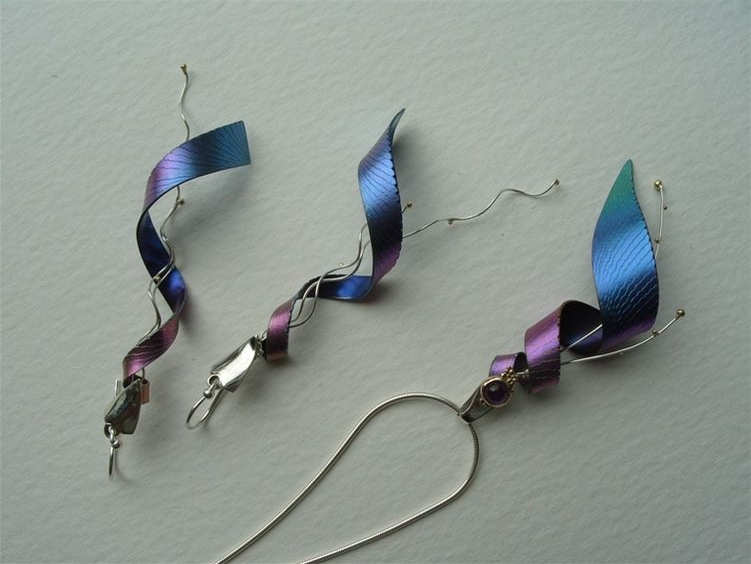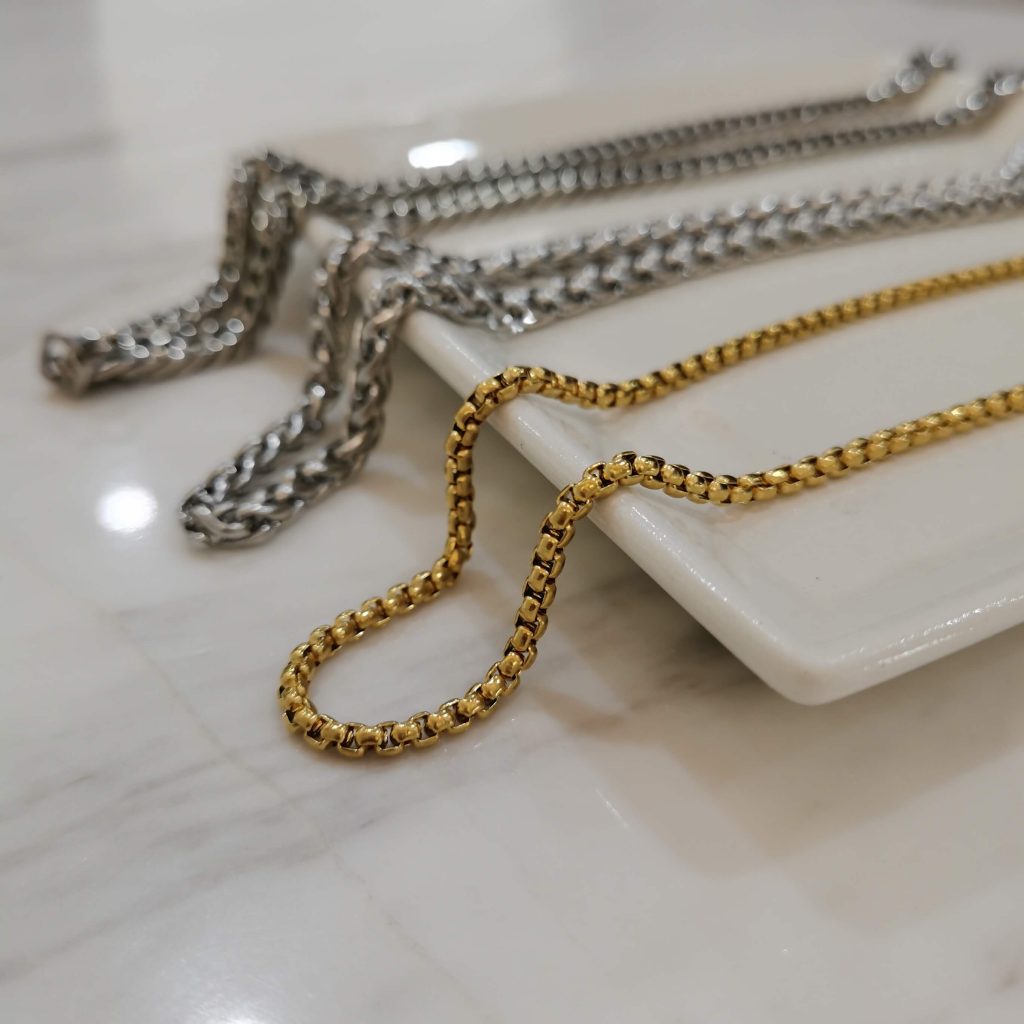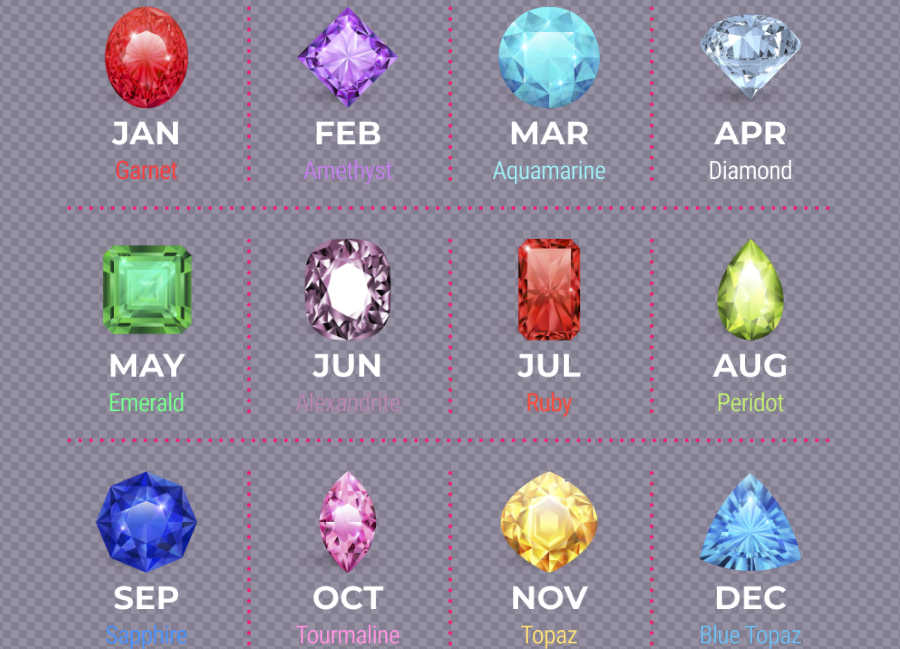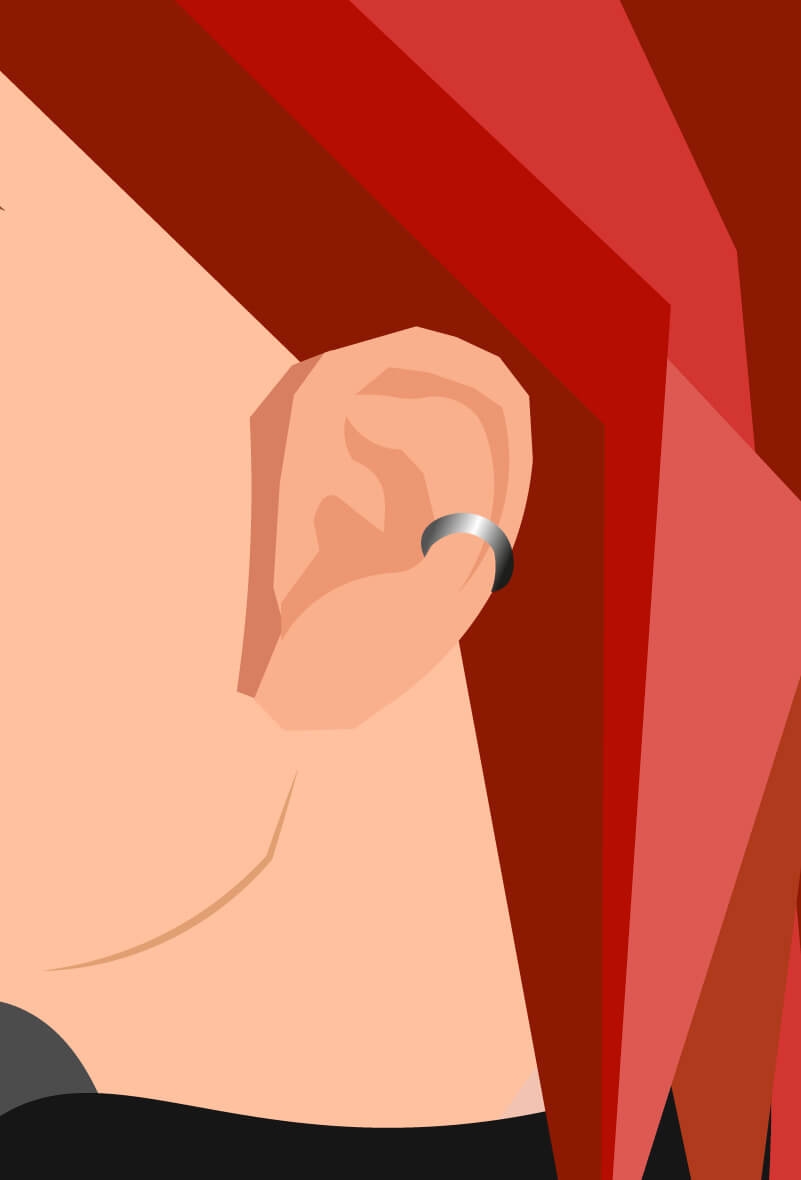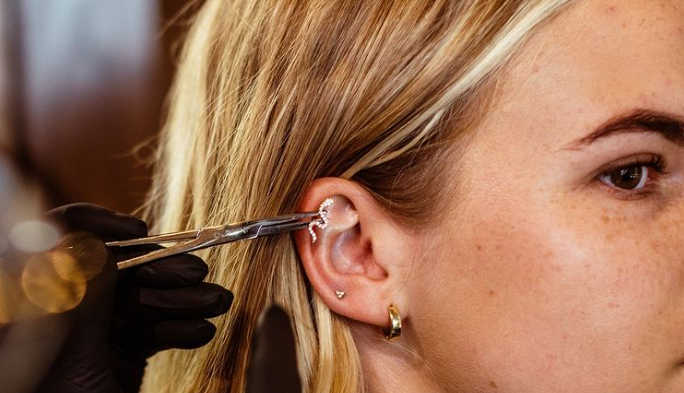What is niobium jewelry?
Although this metal name is not as popular as gold or silver, it should be your best friend if you have sensitive skin, and you are no longer into the idea of jewelry that leaves your skin itchy and or discolored. After all, jewelry is meant to enhance your appearance rather than make you look like you’re struggling. Niobium could be the perfect answer to your problems.
Niobium is a chemical element (symbol Nb). It is a soft, grey metal that is naturally found in the minerals pyrochlore and columbite. Often used in jewelry making because of its hypoallergenic properties, this metal is a safe choice for anyone with metal allergies.
Is niobium safe for piercings?
Yes, niobium makes an excellent metal for body jewelry. Unalloyed niobium is highly biocompatible just like titanium. In fact, it’s included as a metal on the Initial Jewelry Standards published by the Association of Professional Piercers (APP).
Is Niobium Hypoallergenic?
Yes, niobium is a hypoallergenic metal, thanks to the fact that it is a pure metal in its elemental form rather than a metal alloy that might have some reactive metals added to it. Niobium is also non-reactive, which is why it is the ideal metal for persons with sensitive skin or if you suffer from metal allergies from time to time.

Is niobium good for sensitive ears?
Niobium is highly regarded as a safe option for sensitive ears. Although it’s possible to be sensitive to any metal, it is uncommon to have a reaction to wearing pure niobium. If your favorite dangle earrings are giving you trouble, just look for some niobium ear wires to switch the charms over to!
It’s important to make sure the niobium piercing jewelry you’re buying is an unalloyed, high-quality grade because lesser grades of niobium can cause a reaction in some individuals. I use Type-2 niobium wire in my jewelry work, which is an unalloyed, high quality, commercially pure material.
Why Choose Niobium Earrings and why it popular?
Hypoallergenic and extremely lightweight
Extremely lightweight, but yet so durable, hypoallergenic properties
of Niobium Earrings are a perfect choice for those with sensitive ears.
Statistics show that allergies are an increasingly frequent problem we are facing and that the possibility of allergies should always be your concern. That is why it is important to know that niobium is an extremely anti-allergic material. Niobium was first used for manufacturing of implants and artificial hips, so using it to make jewelry was a logical choice.
When you are chose your niobium earrings from our earrings collection, you are selecting the highest quality nickel free earrings that will please your skin and won’t cause allergies.
Niobium Jewelry is easy to take care of
If you are struggling to keep your jewelry looking new, if you are spending too much time polishing your earrings and trying to restore that original glow, then niobium earrings and jewelry is the right jewelry for you. Niobium earrings and jewelry always look new.
Niobium appearance and color never changes, it does not corrode, and you will never have any problems with keeping your earrings and jewelry looking new.
To keep its gray and white shine, you only need a piece of cloth, water and soap.
Niobium Earrings and Environmental Sustainability
The niobium we use to make jewelry is shipped from African mines in Congo, but researches show that niobium sites exist in Brazil and Canada. Experts predict that our planet has sufficient quantities of this metal for the next five centuries.
Niobe’s tears
Niobium is named after the famous Niobe, the daughter of King Tantalus from Greek mythology. Legend says that Niobe boasted about giving birth to more children than the goddess Leto, who had only Apollo and Artemis. Her vanity was punished by killing all her children and leaving her, turned to stone, to shed tears forever.
Niobium was given its name because it’s almost always found alongside tantalum, a chemical element named after Niobe’s father. In nature, they are inseparable.
Does niobium look like silver?
No, niobium jewelry won’t have a bright white color like silver. Aesthetically, niobium is a lustrous silvery-grey metal which polishes to a beautiful, shiny finish extremely readily. I love how well the grey color pairs with silver, copper and gold accents. The resulting contrast makes very eye catching jewelry. If you aren’t a fan of the natural grey color, niobium piercing jewelry can also be anodized to create many colorful options, like purple, lime green, and peacock blue.
Sometimes, niobium is also heat treated so that it becomes a rich black color. Unlike black steel piercing jewelry, the black color on niobium does not come from a PVD coating. This means that black niobium jewelry is safe to put in your piercing because there is no coating that will peel or flake off.
It’s important to note that anodizing is not the same as plating metal. Anodized niobium is safe for body piercings because the color actually comes from a colorless, inert oxide layer that forms a transparent layer on the surface of the metal when an electrical current is passed through the niobium. The end color is influenced by the strength and duration of this electrical current, which determines the thickness of the oxide layer.
The resulting oxide layer is capable of creating a rainbow of vibrant colors when light rays are passed through it. Although the color may fade over time, it cannot be peeled or flaked off. Opening and closing endless nose hoops repeatedly, or scratching your jewelry, can affect the anodized color.
On the other hand, the color of plated and PVD coated jewelry can flake off, which makes it an unsuitable piercing jewelry material especially for long-term wear.

Can You Anodized Niobium at Home?
It is possible to create a bath anodizing process at home. There are a number of anodizing coloring techniques beyond one solid color. These include a rainbow effect, solid color blocking, or even a spot anodizing process that creates a painted design. Any cutting, forming, and finishing on homemade niobium jewelry should be completed before anodizing the metal. Once it is anodized, any additional work on the metal will negatively impact the iridescent colors
The process is somewhat complicated and requires a number of chemical tools including an SMT Micro Anodizer, distilled water, chemical solutions, safety gloves and glasses, and more. The anodized tool carries up to 120 volts of electricity and can be fatal if used incorrectly. If anodizing metal at home is something you want to pursue, consult an expert and practice all safety precautions before proceeding.
Does niobium have nickel in it? Is it better than surgical steel?
Jewelry that is made from unalloyed niobium (grade 2 and grade 4) is nickel free. Because of it’s nickel-free status and highly biocompatible nature, niobium does make better body jewelry over “surgical steel”. Body jewelry made out of 316L steel will contain nickel, even though it is sometimes falsely advertised as being nickel-free. The nickel is bound in the steel alloy in a way that doesn’t present a problem for most people, but it is still something to be aware of if you are sensitive to nickel since most surgical steel jewelry is called “hypoallergenic”.
Is niobium better than titanium?
Pure niobium jewelry is on par with good quality titanium jewelry. Both metals are unlikely to elicit a reaction from the wearer, resistant to corrosion, and are nickel-free. There are a few differences that may matter to you as a consumer.
Titanium is lighter in weight than niobium, but you most likely won’t notice the difference much if you’re buying a small piece of jewelry, like a nose hoop. The heaviness of niobium may be something to consider if you’re buying large gauge earrings, though.
Niobium jewelry is typically more expensive than titanium because the raw materials cost more, are harder to source, and are difficult to work with as a jeweler. It requires the jeweler to have very specialized tools if they want to go further than cold connections in their design work.
And finally, the niobium typically used for body jewelry is not an alloy, whereas the titanium used (Ti6Al4V ELI) is an alloy. Because the niobium used for body jewelry isn’t alloyed with any other metals you won’t find an ASTM rating for it.
Ten articles before and after
How Much Jewelry Should You Wear to Work or Work out?
How Can I Tell If A Necklace Is a Real Silver?
Why Some Rings Can Turn Your Fingers Green?
White Bronze Vs Sterling Silver Jewelry Which one is better?
16 Types of Earrings for Women
Best 5 Types of Earrings For Babies or Toddlers
Top 8 Kind Of Earrings For Sensitive Ears
8 Reasons Why You Should Stock Kids Silver Hypoallergenic Jewelry
How to identify whether Jewelry is Allergic And What to Wear?
